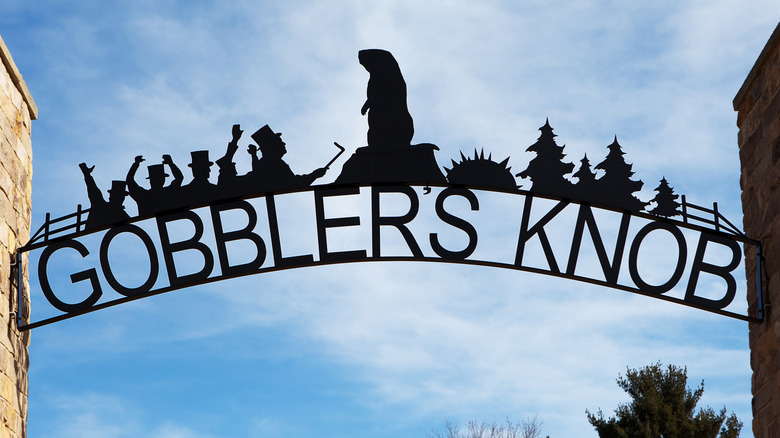Why Is Groundhog Day Always February 2nd?
The story goes that back in 1887, British and German immigrants in Pennsylvania chose a groundhog to predict how much longer winter would last, continuing a tradition from their homeland. In that tradition, hedgehogs were used to predict the weather and the changing of the seasons, and groundhogs were much more abundant than hedgehogs where the updated practice began at Gobbler's Knob in Punxsutawney, Pennsylvania. If the animal saw its shadow on one particular day of the year, residents of Punxsutawney should prepare for six more weeks of winter, according to the people at the time. If no shadows were detected by the animal, then spring was just around the corner, as History reports.
And with that, Groundhog Day was born, celebrated in the United States and Canada every February 2nd, from 1887 until the present day. At first, it might seem like a ridiculous thing to do — how can a groundhog, or a hedgehog for that matter, possibly predict the weather? And what does February 2nd have to do with it? But Groundhog Day actually has deep roots in a much older Christian tradition. Furthermore, the day that we celebrate Groundhog's Day has some real meteorological significance, designating the halfway point between two important markers in the changing of the seasons (via EarthSky.)
The first cross-quarter day of the year
The Christian tradition in which Groundhog's Day has its roots is called Candlemas, as EarthSky reports. In the Christian tradition of Candlemas, also February 2nd, clergy handed out candles to their congregation, estimating how much longer winter might last. In Germany, hedgehogs, which hibernate, were added to the tradition. If the animal's hedgehog senses said spring was imminent it would stay awake, they assumed. If not, it would scurry back to its den to get some extra shut-eye, according to History. With groundhogs more abundant in Pennsylvania, it's believed the residents of Punxsutawney thought perhaps these creatures, too, might also share those purported powers of prognostication.
What's notable about the date when it all happens, though, is that February 2nd is a so-called "cross-quarter" day on the ancient Celtic calendar. Called Imbolc, that date demarcates the halfway point between the winter equinox and the summer solstice. Pre-Christian Celtic culture divided their year up into eight cross-quarter days, Imbolc being only the first (via EarthSky.) Regardless of the reasons why we turn to a groundhog to predict if spring is coming, Punxsutawney Phil — as every participating hedgehog has been called since 1887 — is never very accurate. Groundhog Day nevertheless represents a day for us to gather together and celebrate that we are halfway through the winter, however much longer the season might last.

